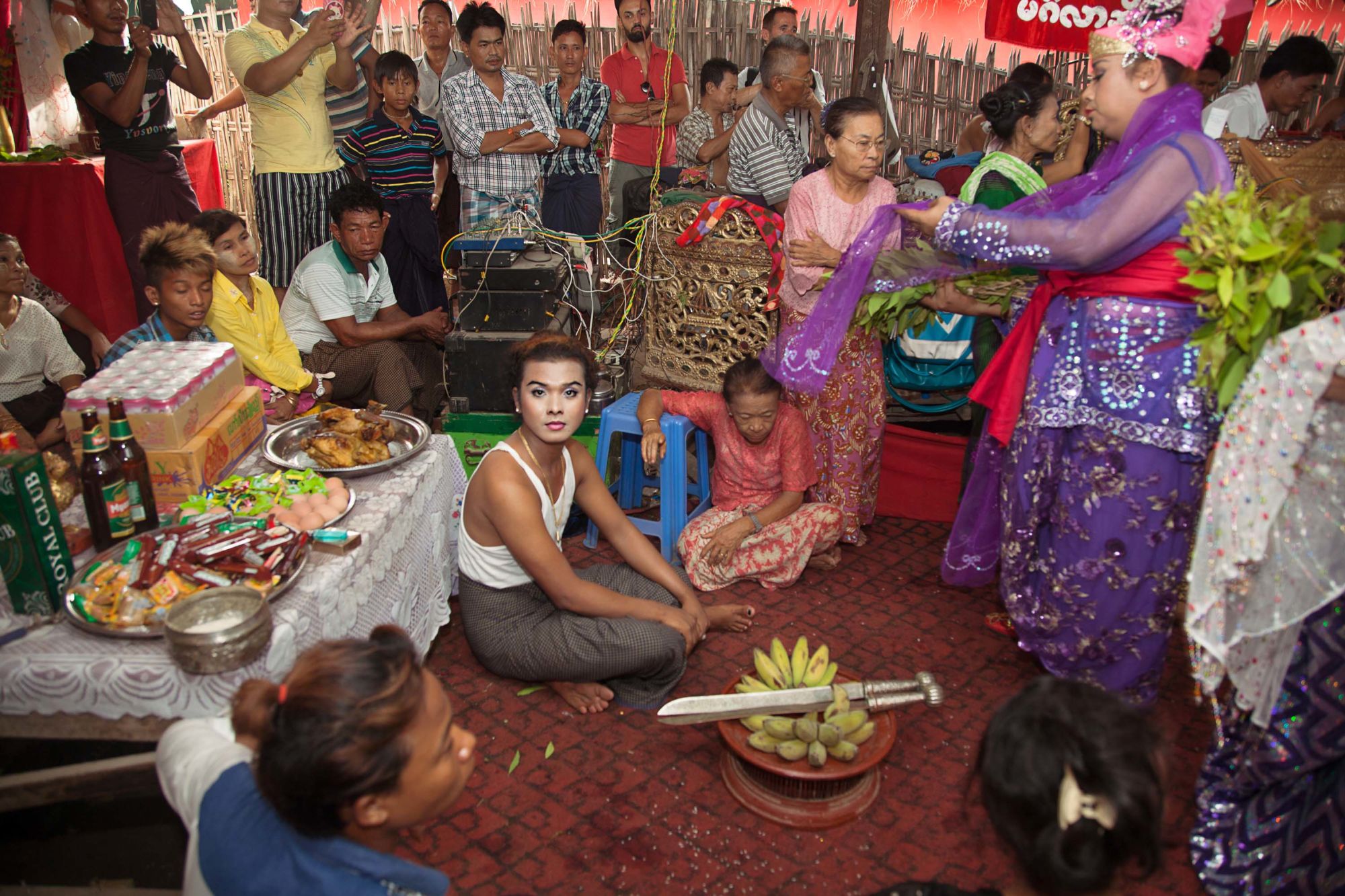Editor’s Note: CNN Style has launched a dedicated Beauty section. Read more Beauty stories here.
Having documented transgender communities for more than 30 years, photographer Mariette Pathy Allen is accustomed to working with those facing stigma and abuse. But the subjects of her latest book represented an altogether different experience.
Combining Buddhist practices with ancient spirit worship, the individuals profiled in “Transcendents: Spirit Mediums in Burma and Thailand,” are mostly biological men who, during religious ceremonies, wear makeup and clothes traditionally associated with women. A number of the mediums live permanently as women, with most of them openly and exclusively attracted to men.
Over the course of four trips to the region, Allen discovered that these gender non-conforming psychics are able to use their respected social positions – acquired through their perceived ability to communicate with the spirit world – to overcome discrimination in conservative societies. She observed that the stigma attached to their gender identity was not only reduced by their religious status – it was eclipsed by it.
How transgender spirit mediums escape stigma in Myanmar and Thailand
“Spirit mediums are appreciated and even venerated,” she said in a phone interview. “Trans and homosexual people are, generally speaking, really looked down upon – especially in Burma (Myanmar). But if they happen to be spirit mediums, the whole thing is reversed. Nobody minds in the slightest what their sexual or gender orientation is.”
A growing phenomenon
As well as earning the respect of their communities, many of the spirit mediums are accepted by families who had previously rejected them, according to Eli Coleman, a University of Minnesota sexologist and founding editor of the International Journal of Transgenderism who first introduced Allen to the phenomenon.
“What’s most important is that they are a pathway to good fortune, success and health,” he said in a phone interview.
Assuming female personas for religious ceremonies is a longstanding tradition in the region, though it has become increasingly common in recent years. One reason may be linked to a belief that females are easier to possess, said Coleman. Wearing clothes traditionally associated with women can help mediums communicate with the spirit world, according to Anukul Siripan, a transgender psychic from the Thai province of Lampang.
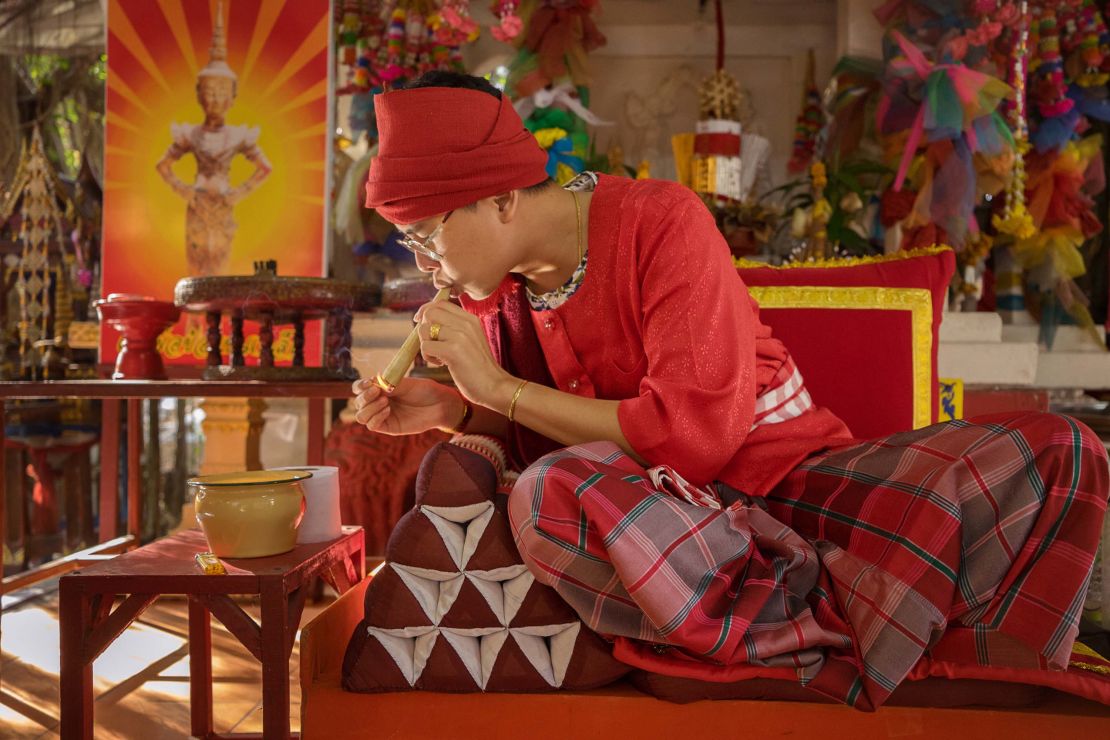
“Yes, it helps to connect with the spirits,” said Siripan, in a phone interview. “Being trans, (we) usually care more about appearance and beauty compared to straight men or women. We believe that good spirits love cleanliness and beauty.”
Hailing from a family of psychics, Siripan has been a medium for around 30 years. As well as conducting religious ceremonies, he works as a college lecturer in social and cultural studies.
“The rituals are about inviting the good spirits – it could be ancestors or angels to protect us,” he said. “People want the spirits to bring them good luck and to protect them on important occasions.”
Siripan said that the transgender mediums are “very popular” in the north of Thailand, and that they can be found in areas across the country. The trend represents a significant demographic shift, according to Coleman, who first encountered the phenomenon in the mid-1980s.
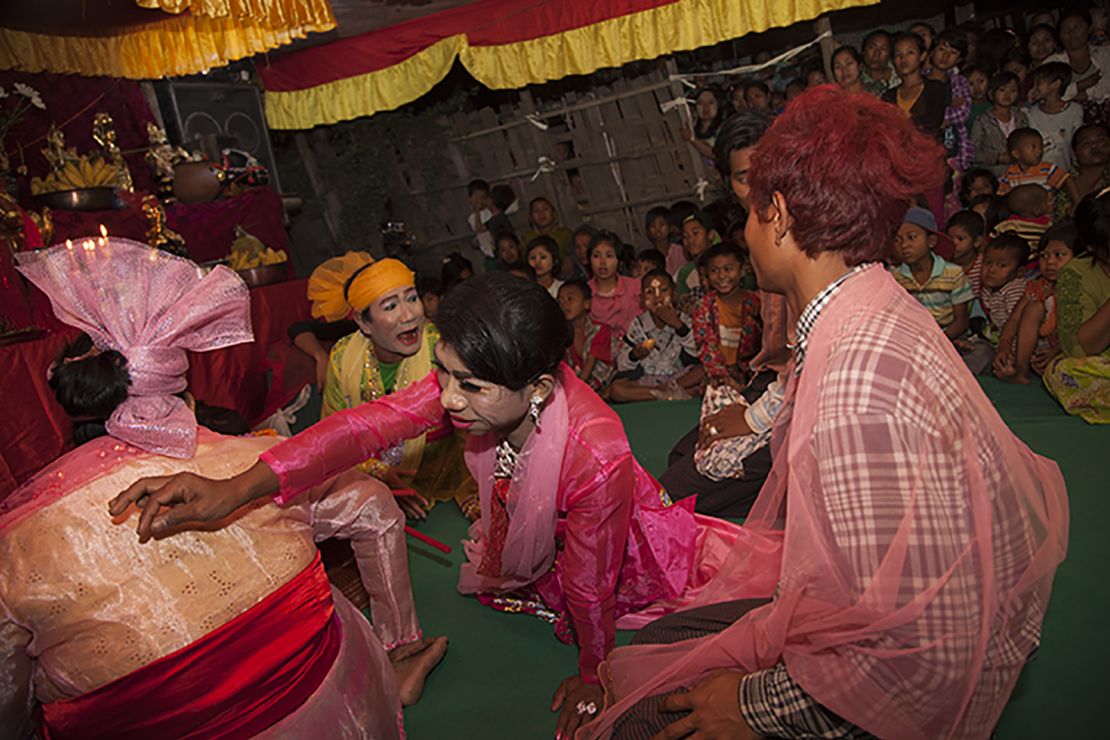
“Fifty or sixty years ago, most of the spirit mediums were (biological) women,” he said. “Over time there was a big change. Gender non-conforming men – and those we would consider trans or gay – moved into these roles, to the point that it’s at least half and half now.”
Coleman said that this shift also reflects the changing fortunes of Thai and Burmese women, who are progressively able to find other sources of work and income.
“(Becoming a medium) has traditionally been a way for women to gain power in a very patriarchal culture,” he said. “Now that they have gained economic power through education and greater equality, there are fewer women interested in – or have the time to do – this work. So the next stigmatized group gets in.
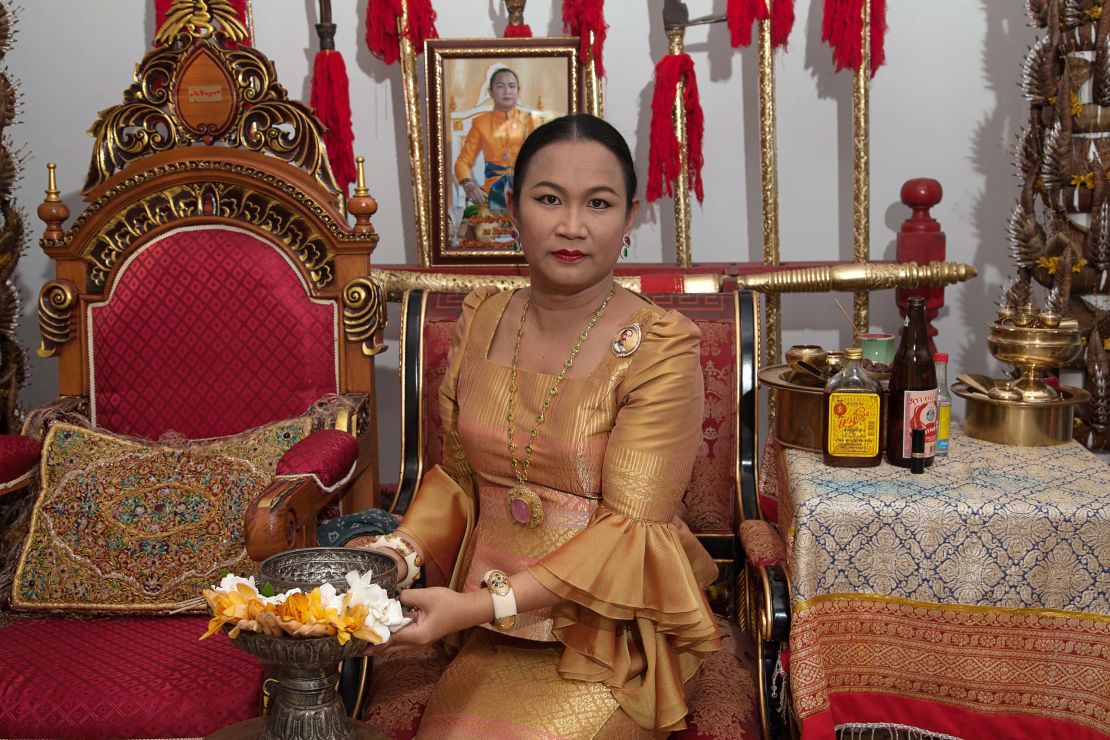
Both Coleman and Allen found the mediums to be open about their identity, orientation and sexual prowess. But while the role offers a safe space (and a source of income) for gender non-conforming individuals, it’s not necessarily an easy option.
“It can be a burden,” Coleman said. “If you’re possessed by a spirit then you’re locked in – you can’t leave them. So it’s a double-edged sword, and not something that people would necessary aspire to. You always have to go with the spirits and do as they want. Then there are the rituals. There’s just a tremendous amount to learn.”
A visual feast
It was during these elaborate ceremonies that Allen was presented with the best opportunities to photograph her subjects. While her book features candid shots of the mediums’ everyday lives, some of the most striking images capture them mid-ritual – at home or at religious festivals.
In addition to brightly colored clothes, jewelry and makeup, the images feature ornate altars and other paraphernalia, like candles, incense and flowers.
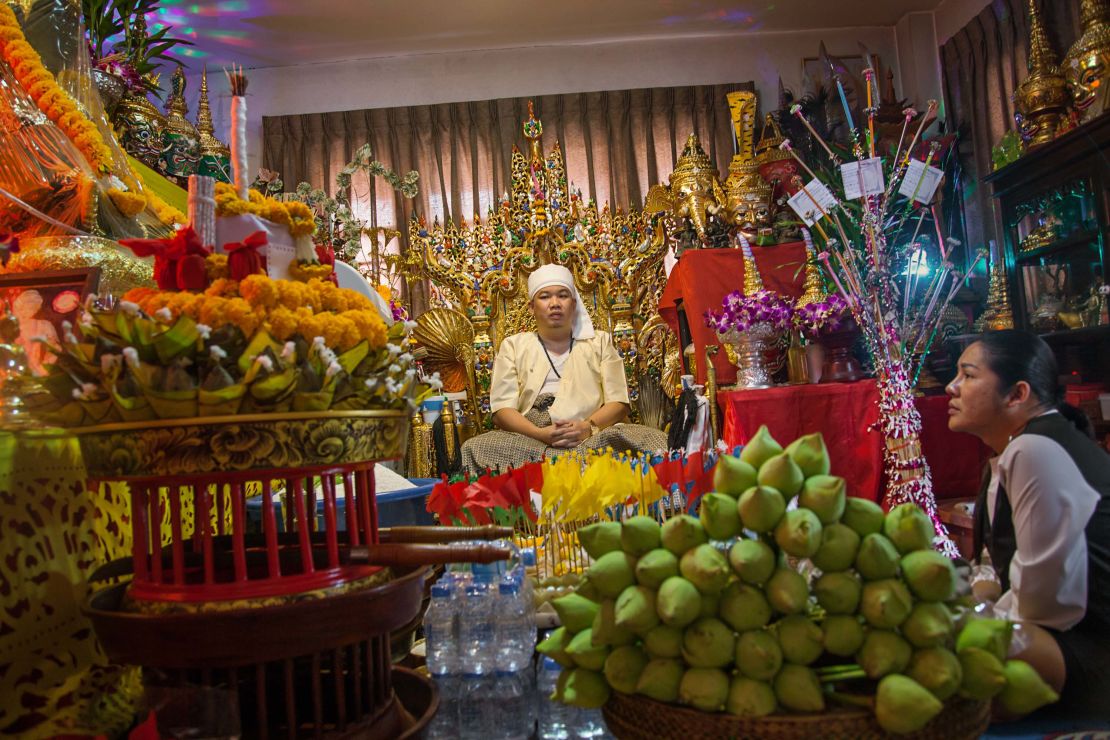
“I was very lucky to be given so much visual material to work with,” said Allen, whose last book documented the lives of Cuba’s transgender community. “I think a lot of (the spirit mediums) are really very beautiful. All this decoration and design – not just of themselves, but of the environment they create – is wonderful.
“At this huge festival I went to in Burma, every tent was beautiful and decorated in a different way, with different colors and fabric.”
Allen witnessed mediums as they appeared to be taken over by spirits, including those of ancestors, a deceased military general and even – in the case of one medium who sucked on a pacifier while possessed – babies. Ceremonies often involved drinking or smoking, both of which regularly appear in Allen’s photos.
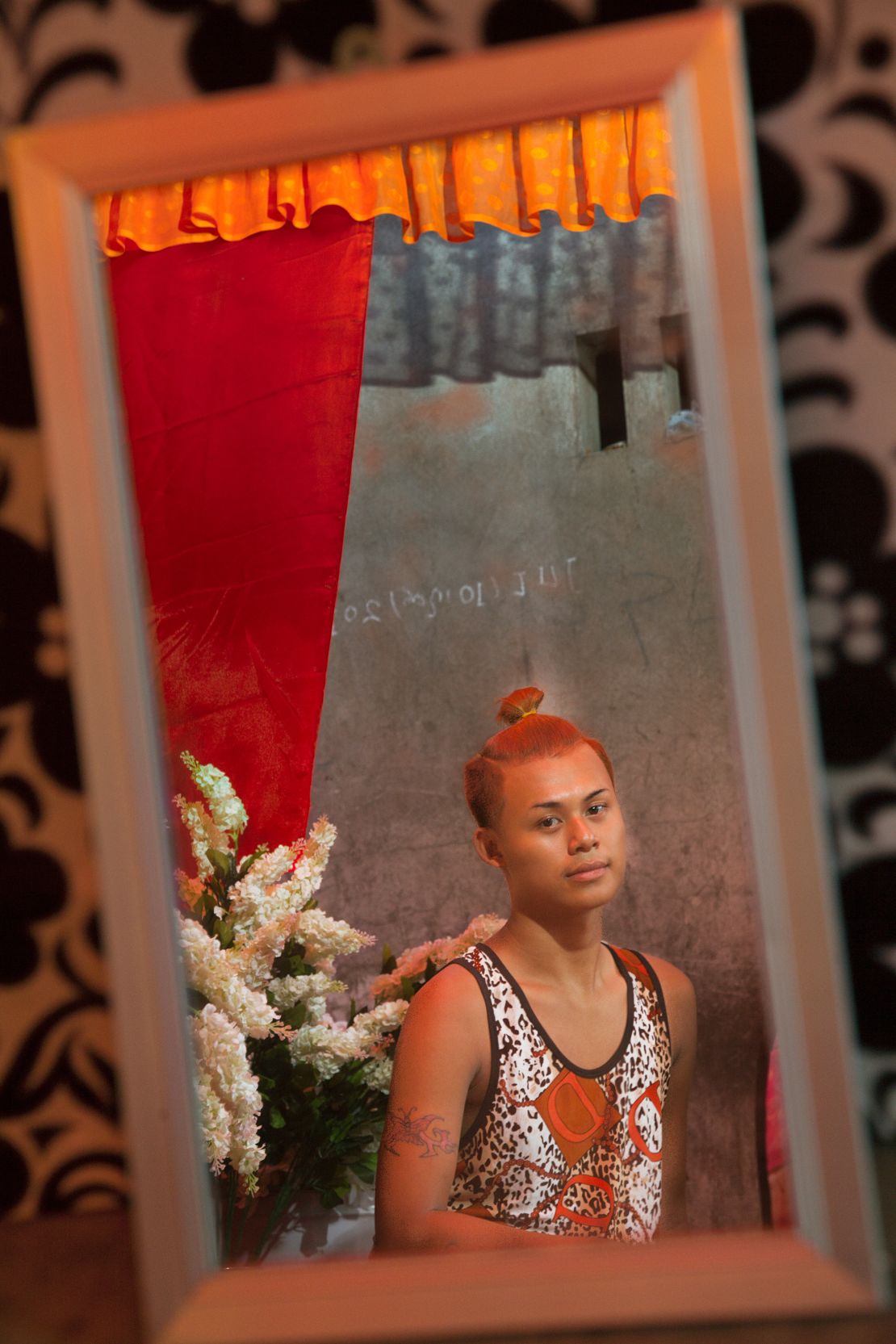
Depending on the spirits believed to be present, mediums may switch between traditionally masculine or feminine roles, Coleman observed. This process of assuming different roles further emphasizes what he calls their gender “liminality” – an anthropological term referring to a state of fluidity that occurs during religious rituals.
Studying this phenomenon may offer wider insight into our own understanding of transgenderism, he added.
“I think this research is important because it illustrates how society can construct and decide to stigmatize, or it can create a place, a sanctioned space, for people to thrive.”
“Transcendents: Spirit Mediums in Burma and Thailand” is published by Daylight Books.
